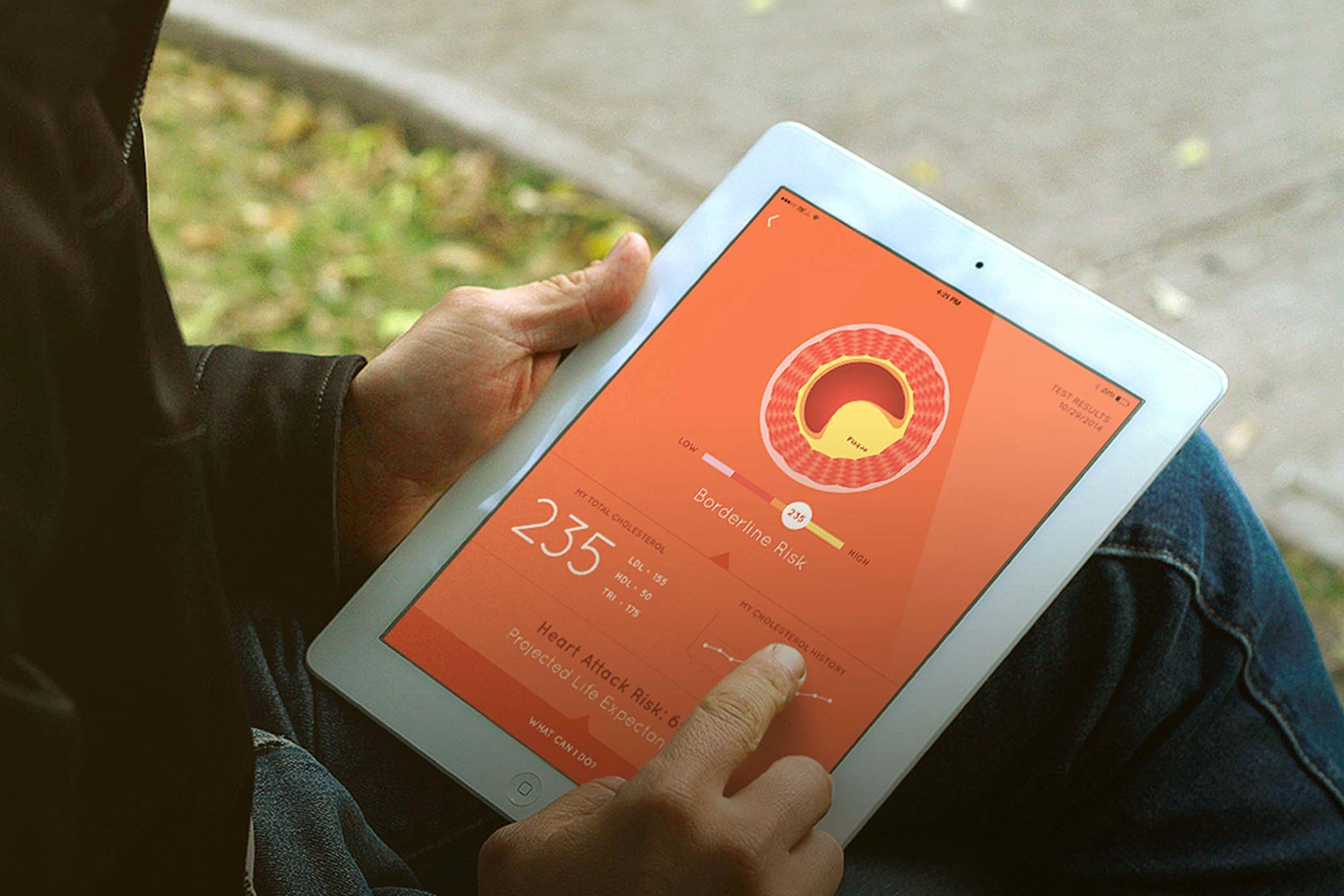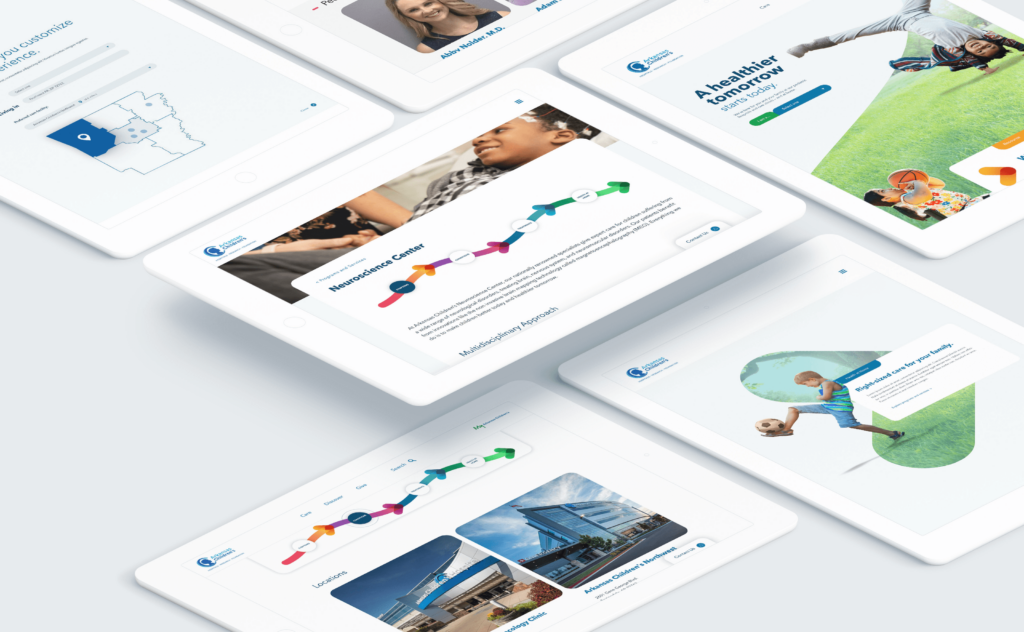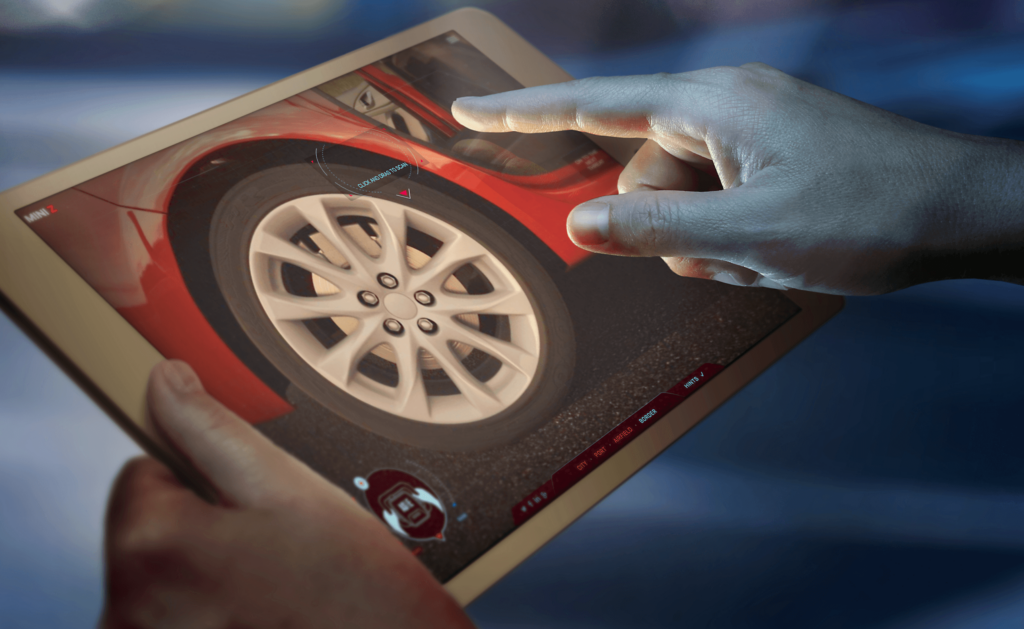3 years ago we envisioned what the future of healthcare would look like. Today, we’re pleased to see that future starting to become a reality.
The focus of our story, a gentleman named Mark, was battling healthcare’s silent killer, hypertension. Mark knew he wasn’t entirely healthy. But, like many patients, he was in denial and put off addressing the issue head on.
We designed several apps to help Mark in his journey – from a reimagined lab report, to an app that keeps his family updated during surgery, to companion apps that get prescribed after Mark’s surgery to monitor his condition for atrial fibrillation (AFib).
AFib is a serious condition, especially after heart surgery. This irregular rhythm can lead to heart failure. But thanks to new advances in wearable devices and artificial intelligence (AI) the home-monitoring of AFib isn’t only possible, it’s effective.
Using AliveCor’s Kardia Band which detects AFib, Cleveland Clinic has shown that it can accurately monitor the heart’s electrical activity.
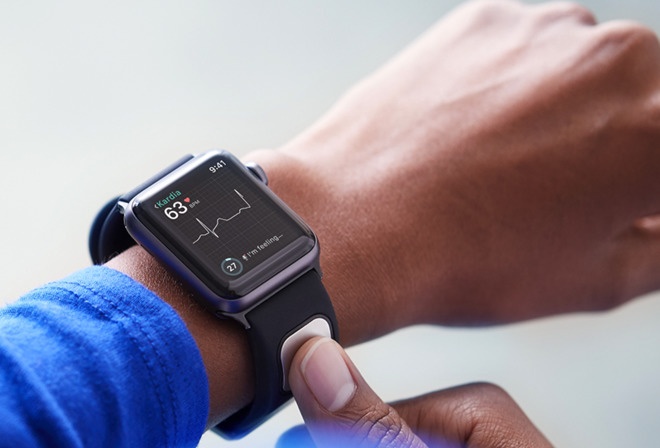
The FDA-cleared, clinical grade wearable EKG becomes a patient’s new Apple Watch band. On the backend, an algorithm calculates if the rhythm is normal and notifies the patient accordingly.
In a blinded, prospective study of 100 patients, the wearable device detected AFib with 93 percent sensitivity and 84 percent specificity compared with the 12-lead ECG used in clinic. (Health Data Management)
Alerting patients about this potentially life-saving indicator is a huge leap forward. But it’s only half the story. A physician’s interpretation of the data is still critically important. In fact, Cleveland Clinic found that when an electrophysiologist also interpreted the data, the accuracy was improved even further to 99 percent sensitivity and 83 percent specificity.
In Mark’s story, a doctor could receive a push notification from PostApp, a post-surgical application to keep an eye on the recovery progress of his patients.
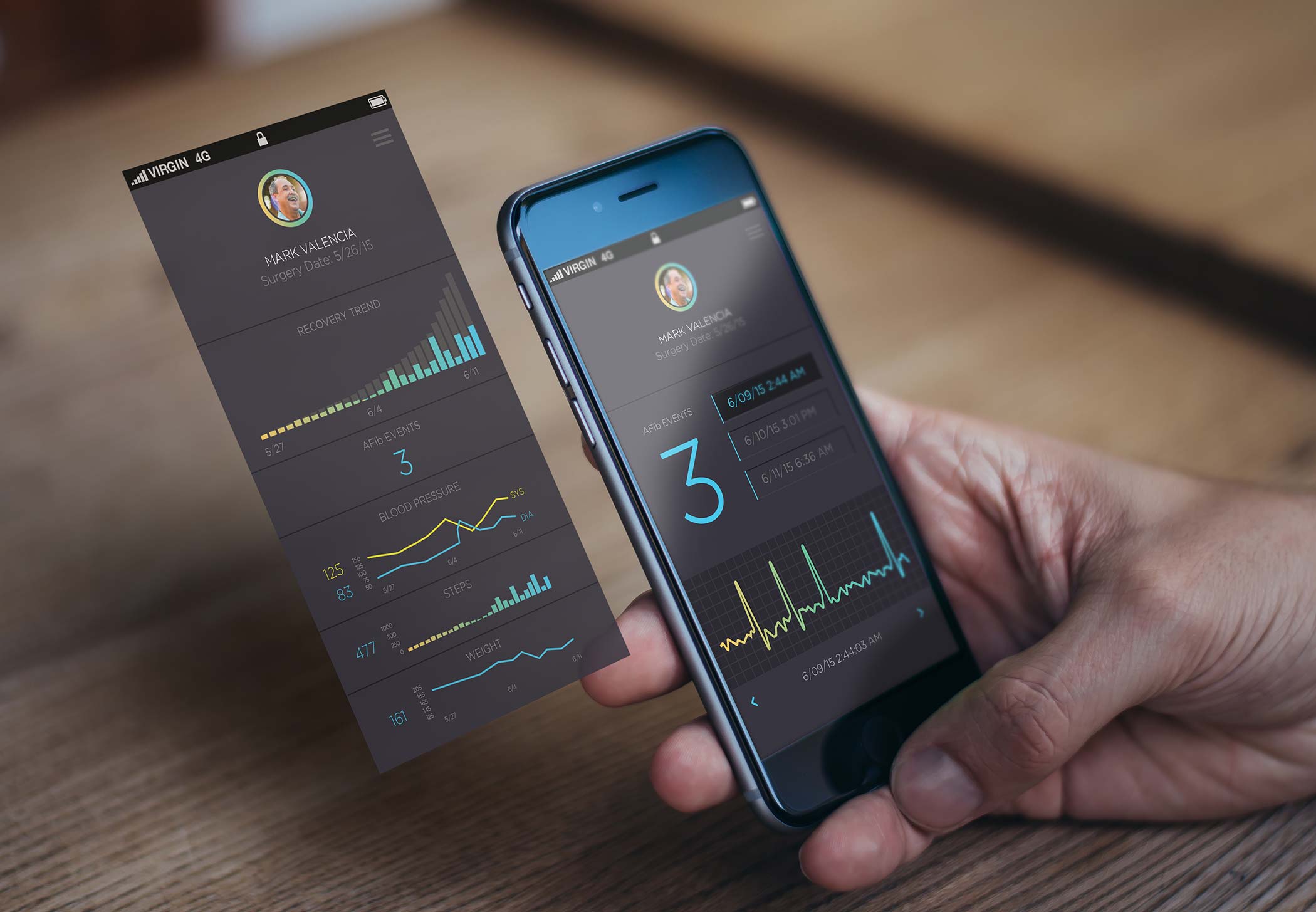
The app alerts Mark’s doctor that he might have atrial fibrillation. His doctor is able to quickly check in on Mark by reviewing real-time data. And, suspecting a need to change the dosage on a prescription, Dr. Walker asks Mark to come in for a follow-up exam.
We’re pleased to see this other part of Mark’s story becoming a reality. AliveCor is currently testing a platform that can integrate with a cardiology practice to give doctors direct access to the results. And the Cleveland Clinic is planning to conduct a study to evaluate cost savings from using the device.
What will your story be?
Hospitals that invest in technology like this aren’t just driving better health for patients, they’re turning patient experience on its head by creating true differentiation in a very crowded space – ultimately driving better health for their organization. After all, customers who have the best experiences are more loyal—and valuable.
But which investments are right for your hospital? The sheer number of wearable health devices is overwhelming – and only growing larger. And the patient journey is made up of millions of opportunities to build drive satisfaction, loyalty, and better outcomes.
By mapping individual moments, you can identify the most crucial ones to fuel your customer experience.
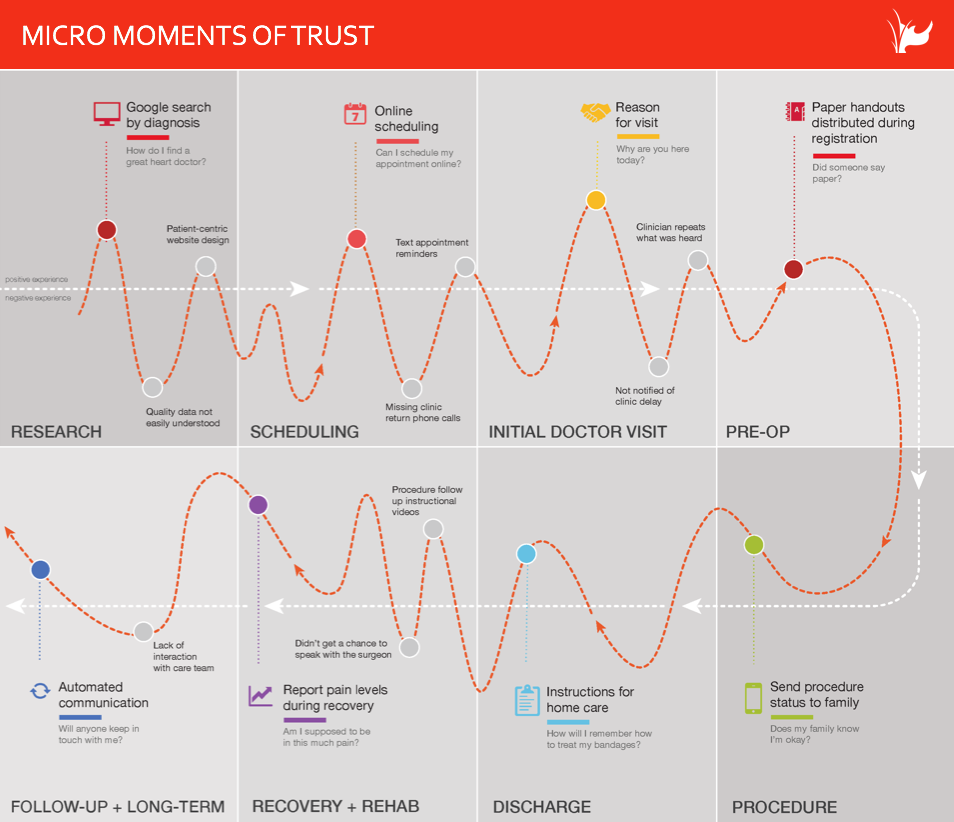
It starts with a formal assessment of business goals and your existing clinical priorities for value-based care and population health management.
Combined with research into psychological motivators for various patient populations plus an assessment existing IT investments, you can then prioritize the initiatives that will have the greatest return for your organization and patients. The resulting 3-5 year timeline can give you a sense of calm and clarity in an overwhelming digital health landscape.
